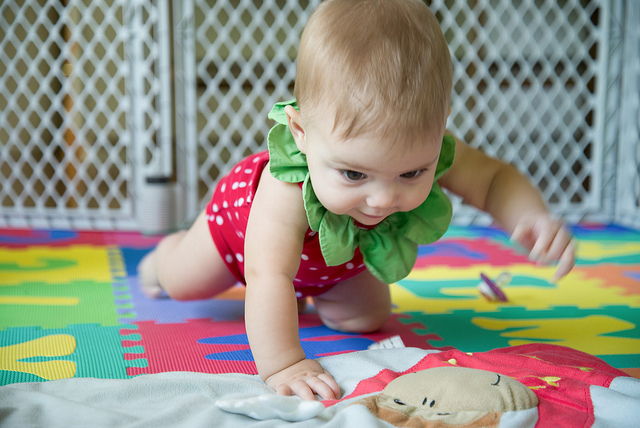In the summer I had the opportunity to read a number of books and amongst my selection I came across Maxine Sheet-Johnstone (Movement as a Way of Knowing” (2013); The Primacy of Movement,1999; Thinking in Movement; 1981).
Her writings brought all my current work with early years settings into sharp focus because I recognised that her understanding of movement and the idea of a movement capability were very pertinent. In fact, it opened my eyes to a different way of thinking about movement especially her concern for what she calls motorology (motor control, motor skills, motor learning, motor programmes – which she sees as a reductive stance). As a result, I feel that any discussion about Physical Literacy needs to address her account of movement because it is a different way of thinking from the current dualist perspective that dominates physical education. With this in mind, I shall identify some key points to serve as the basis for further discussion.
In ‘Movement as a Way of Knowing’ (2013) Sheets-Johnstone makes the point that:
“Movement comes in all sizes. It is stretchable, temporally elastic, and full of energetic possibilities. It can be tailored to any occasion. It can be discreet or boisterous. Like anything that is overdone, it can tire you out or even knock you out” (p.1).
She goes on to say that children often excel in different forms of movement and an infant’s curiosity is stimulated by it (Spitz 1965). Infants learn to stand on their own two feet and cease being dependent on an adult. They actually learn to do this on their own without any instructions from others and without a manual. It is a remarkable feat, a form of understanding associated with coordination dynamics (Kelso 1995) and the primal animation and intrinsic dynamics of animate forms of life (Sheets-Johnstone, 1999; Kelso 1995) yet we tend to disregard it and advocate that children need instructions from adults and more formal structured activities. There is considerable scope for an urgent review of current practices.
Infants and children engage in all sorts of movement in the course of learning about what their bodies can do and learning to move themselves. They crawl, fall, totter, romp, break things, throw their toys about, yell for help or comfort, and engage in what adults can perceive as mischievous behaviour. However, they can be seen also to be exploring the world through their movements and having a great time playing around with their own movement possibilities and the movement possibilities of objects in the world around them. This is a time of exploration, discovery, wonder, surprise and just good fun.
The moving body is essentially how we experience the world and its central role is perception and cognition. Self-movement is fundamental to life and its meaning. This is why we need to examine seriously how it is that babies who cannot walk or talk are able to become toddlers who can do both: from infancy we are all self-schooled in movement and in the interrelationships of movement and meaning and it is because we are attracted to movement from when we are born, we have curiosity and a desire to move.
Sheets-Johnstone speaks of sensory-kinetic-kinaesthetic experiences which refer to the integration of sensori-motor proprioceptive neurological loops with the skeletal system. As a result, a repertoire of ‘I CANs’ is born in movement and develops into synergies of meaningful movement. The focus on motorology in current physical education can deflect us from the affective (emotional) dynamics that constitute the synergies of meaningful movement and inform the lives of animate beings. We need to remember that it is only when we interact within the cultural contexts of sport, dance or other purposeful pursuits that we are doing something meaningful. Also, we need to recognise that the development of agency is rooted in the qualitatively dynamic experiences of our bodies, on kinaesthesia, tactility and on our innate receptivity and responses to the world around us.
What does this mean for Physical Literacy? I would argue that there are a considerable number of issues that we have not addressed thoroughly enough in the development of Physical Literacy and this is one of them. What is the relevance of ‘sensory-kinetic-kinaesthetic experiences’, a repertoire of ‘I Cans’ and ‘synergies of meaningful movement’ and what do they mean for physical education? In my early years work, they mean a great deal but what about primary and secondary physical education? Does this kind of thinking challenge us to rethink what is meant by the development of movement capability?
In the same way, questions begin to emerge about the notion of agency and self-directed learning and their neglect. These are questions that the physical education profession has problems with: there is a big difference between theory and practice.
Physical Literacy needs far more debate and critique: blogs and papers are circulated but there are very few responses from people within the physical literacy family. We need scholarly discussion to open up the issues so that we can enhance our understanding and move forward: without this we will never be able to provide guidance to inform the profession and ensure that practice has a coherent framework.
Please join the debate.
References
Kelso, J. A. Scott. (1995). Dynamic Patterns. Cambridge, MA: Bradford Books/MIT Press.
Sheets-Johnstone, M. (1981), Thinking in movement. Journal of Aesthetics and Art Criticism, 39 (4),399–407.
Sheets-Johnstone, M. (1999). The Primacy of Movement. Amsterdam/Philadelphia: John Benjamins University Press (2nd ed. 2011).
Sheets-Johnstone. M. (2013), Movement as a Way of Knowing. Scholarpedia, 8(6):30375. doi:10.4249/scholarpedia.30375
Spitz, René. (1983). Dialogues from Infancy, ed. Robert N. Emde. New York: International Universities Press.

